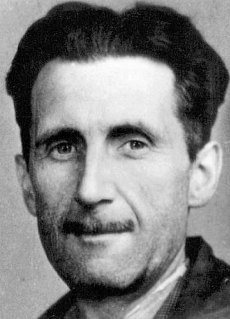
George Orwell’s Animal Farm, for those unfamiliar with the story, follows the tale of how two pigs, Napoleon and Snowball, inspired by a deceased prize pig, Old Major, unite their fellow animals (or comrades) to take over the farm on which they have been imprisoned by Mr Jones (no relation). By doing so they take control of their own destinies. However, prospects become increasingly bleak as the values of Marxist equality outlined by Old Major are twisted and abused, eventually leading to the infamous phrase, ‘All animals are equal, but some animals are more equal than others.’
Orwell’s novel is thought to be one of the most important works of the twentieth century. Its criticism of the Soviet regime through the use of anthropomorphic allegory is taken for granted now, but back when it was published in 1945, the West was allied to the USSR and some countries, including Britain, were looking to adopt Communist ideas for themselves. As an example of this growing sympathy, in 1943, the BBC even celebrated the 25th anniversary of the founding of the Red Army. At that time, Orwell appears to have been one of the few who were aware of the dangers of toying with a Communist ideology, having fought in the Spanish Civil War and been chased out of Spain by Stalinist fighters.
It was his experience in Spain that encouraged him to write Animal Farm:
‘On my return from Spain I thought of exposing the Soviet myth in a story that could be easily understood by almost anyone and which could be easily translated into other languages.’
One of the most astonishing feats of the story is its apparent simplicity. This means it can be read by children who, without understanding the allegory, can grasp its cautionary messages about corruption, repression, and a promised utopia. Yet at the same time, students and adults can appreciate the work on a sophisticated level, as the historical allegory of the October Revolution and its turbulent aftermath run deep within the text. The more one knows of the period, the more one realises Orwell’s genius lies in how he hid so much complexity beneath apparent simplicity.
However, behind the allegory is a mystery that few seem to have identified or given much attention to. There is a missing pig in the allegorical fields of Animal Farm. This is because there were three figures that shaped the early days of Soviet Russia: Stalin, Trotsky, and Lenin. But Christopher Hitchens identifies in an introduction to Animal Farm that,
‘There is a Stalin pig [Napoleon] and a Trotsky pig [Snowball], but no Lenin pig.’
Why would an author as knowledgeable of the Soviet regime as Orwell omit the leading man of the October Revolution – the event upon which the book is premised? This question becomes more substantial when we learn that Orwell later said of his work: ‘[I] had full consciousness of what I was doing, to fuse political purpose and artistic purpose into one whole’.
Image: By Branch of the National Union of Journalists (BNUJ). (http://www.netcharles.com/orwell/) [Public domain], via Wikimedia Commons

0 Comment:
Be the first one to comment on this article.